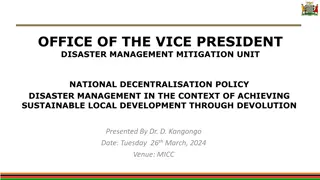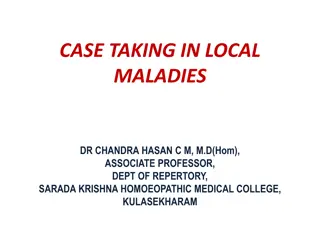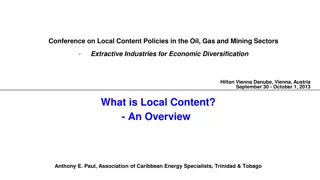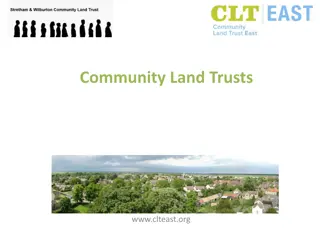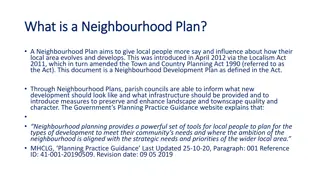
Insights into Hammersmith & Fulham: Population, Diversity, Deprivation, and More
Explore key statistics about Hammersmith & Fulham, including population growth projections, age demographics, ethnicity breakdown, deprivation levels, migration patterns, and employment rates. Learn about the unique characteristics and challenges faced by this London borough.
Download Presentation

Please find below an Image/Link to download the presentation.
The content on the website is provided AS IS for your information and personal use only. It may not be sold, licensed, or shared on other websites without obtaining consent from the author. If you encounter any issues during the download, it is possible that the publisher has removed the file from their server.
You are allowed to download the files provided on this website for personal or commercial use, subject to the condition that they are used lawfully. All files are the property of their respective owners.
The content on the website is provided AS IS for your information and personal use only. It may not be sold, licensed, or shared on other websites without obtaining consent from the author.
E N D
Presentation Transcript
Population Growth Residents aged 80+ years projected to almost double in the next 10 years In 2022, the resident population in Hammersmith and Fulham is estimated to be approximately 201,400 people. In 2032, the population is projected to increase by 21% to 244,300 people. The largest growth in population will occur amongst those aged 80 years and above, which is projected to increase by 48%. The smallest population increase will occur in those aged between 0-15 years, which will increase by 13% in the next 10 years 2
Age & Gender Population of Hammersmith and Fulham by age and gender is similar to the overall London population The largest proportion of residents are working aged adults between 25-49 years (43%). CYP make up the second largest age group in the borough, with 28% aged 0-24 years. This is similar to the proportion of CYP in London (29%). 9% of the population are aged 69 years and above, which is the same as the London figure. 3
Ethnicity In Hammersmith & Fulham, it is estimated that 65% of residents are from a White ethnic group. This is larger than the London figure of 56%. The smallest ethnic minority group in the borough is Asian which is 10%. This contrasts with the overall London figure, where 21% of the population is Asian . 13% of the population in Hammersmith & Fulham are from a Mixed/Other ethnic group, this is the largest ethnic minority group in the borough 4
Deprivation Pockets of deprivation are spread throughout the borough but are particularly focussed in the north of the borough Hammersmith and Fulham is the 112th most deprived out of 317 local authorities in England. One LSOA ranked in the 10% most deprived areas in England. Approximately 1% of H&F residents live in the most deprived decile of neighbourhoods and further 17% in the second most deprived decile. Around a third of children aged 0 to 15 live in income deprived families (in the 20% most deprived nationally) 49% of older people aged 65+ are income deprived (in the 20% most deprived nationally) 5
Migration H&F has a highly mobile population Hammersmith & Fulham has the 6thhighest mobility rate in England. In 2019, there was a net gain of 114 international migrants. In terms of internal migration, in 2019, there was a net loss of 1,679 internal migrants. 6
Employment In Hammersmith & Fulham, it is estimated that 80% of working aged adults are economically active, and of those who are economically active 96% are in employment. The average weekly pay for a full-time worker in Hammersmith & Fulham is 782.50. This is higher than both the average London weekly pay ( 716.40) and the average weekly pay in Great Britain ( 587.10). Full-time working males are paid on average 17.1% more than full time working females; this is a larger gender pay-gap than the London average (13.2%) and the average in Great Britain (14.4%) 7
Education Majority (78%) of working aged adults are educated to National Vocational Qualification (NVQ) Level 4 or higher, which is equivalent to having a degree level qualification or above. A small proportion (2%) of working aged adults have no qualifications. 8
Healthy Life Expectancy Male and Female healthy life expectancy higher than the London average Male life expectancy in H&F is 79.8 years. Healthy male life expectancy is 66.5 years This is the 5th highest in London, which is higher than the London (63.5 years) and England averages (63.2 years). Female life expectancy in H&F is 84.7 years. Healthy female life expectancy is 67.2 years This is 7th highest in London, which is higher than the London (64.0 years) and England (63.5 years) averages. 9
Questions 10

